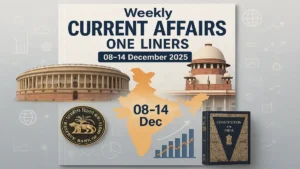Dussehra 2023
Dussehra, also known as Vijyadashami, is one of the most significant and colorful holidays celebrated by Hindu people in India. It marks the conclusion of the nine-day Navratri festival. Dussehra 2023 is to be celebrated on 24th October. Let’s delve into the essence of this festival, its historical significance and the customs that make it such an integral part of Indian culture.
Dussehra 2023, Date and Puja Timing
Dussehra 2023 falls on 24th October 2023 and devotees mark this day with various rituals and celebrations. The Vijaya Muhurat, an auspicious time for puja, begins at 1:58 pm and ends at 2:43 pm. The afternoon puja time ranges from 1:13 pm to 3:28 pm. The Dashmi Tithi starts on 23rd October at 5:44 pm and ends at 24th October 3:14 pm. The Shravana Nakshatra is observed from 22nd October at 6:44 pm to 23rd October at 5:14 pm.
Why do We Celebrate Dussehra?
Dussehra, the tenth day of Navratri, marks the end of a nine-day festival dedicated to various forms of Goddess Durga. This day is also known as Vijyadashami, meaning the day of Victory. Different regions connect Dussehra to different legends, such as Goddess Durga’s triumph over the demon Mahishasura or the epic battle of the Ramayana.
Legends of Dussehra
Dussehra is intertwined with two popular legends:
- Lord Rama’s Triumph: According to the Ramayana, Lord Rama, accompanied by his wife Sita and brother Lakshmana, waged a fierce battle against Ravana, the demon of Lanka, who had abducted Sita. After nine days of prayers to Goddess Durga, Rama finally defeated Ravana, signifying the victory of good over evil.
- Goddess Durga’s Victory: Another legend tells of Goddess Durga vanquishing Mahishasura, a powerful demon. Dussehra marks the day when she achieved this feat, reinforcing the theme of righteousness prevailing over wickedness.
Dussehra 2023, Celebrations
Dussehra is a time for merriment and rituals that vary across India. It signifies the victory of virtue over vice and sets the stage for the upcoming Diwali festival. Some common customs include:
- Large-Scale Processions: Colorful processions with idols and cultural performance.
- Ravana Dahan: The burning of effigies of Ravana, representing the defeat of evil.
- Ramleela: Elaborate reenactments of Lord Rama’s life, especially his victory over Ravana.
- Shastra Puja: The worship of weapons, emphasizing their role in protecting dharma (righteousness).
Dussehra and Diwali Connection
Dussehra paves the way for Diwali, a festival 20 days later. Diwali marks Lord Rama’s return to Ayodhya after defeating Ravana, symbolizing the triumph of good. The central message of Dussehra is that good conquers evil and it is a time to pray for prosperity and well-being.




 Weekly Current Affairs One Liners 08th t...
Weekly Current Affairs One Liners 08th t...
 Which Indian City is Known as the Footwe...
Which Indian City is Known as the Footwe...
 Which Desert is known as the Cold Desert...
Which Desert is known as the Cold Desert...







